Child & Family Support Programming & Resources
Application and Attachment Information
Best Beginnings Online Application
Additional Forms:
School / Training Verification
Self-Employment Income Verification
Child Support Compliance Verification
Reports
FFY 2024 Quality Progress Report
FFY 2023 Quality Progress Report
FFY 2022 Quality Progress Report
Research
2023 Montana Narrow Cost Analysis. Contact us for a copy
2023 Montana Child Care Market Rate Survey. Contact us for a copy
2025-2027 CCDF State Plan Approved
Previous year's state plans available upon request. Contact us for a copy.
This document embraces developmentally appropriate practice as explained in Developmentally Appropriate Practice in Early Childhood Programs: Serving Children from Birth through Age 8 (NAEYC, 2009). While primarily focused on the competencies needed to effectively work with children birth to age 5, competencies often apply to teachers of children through age 8 and older.
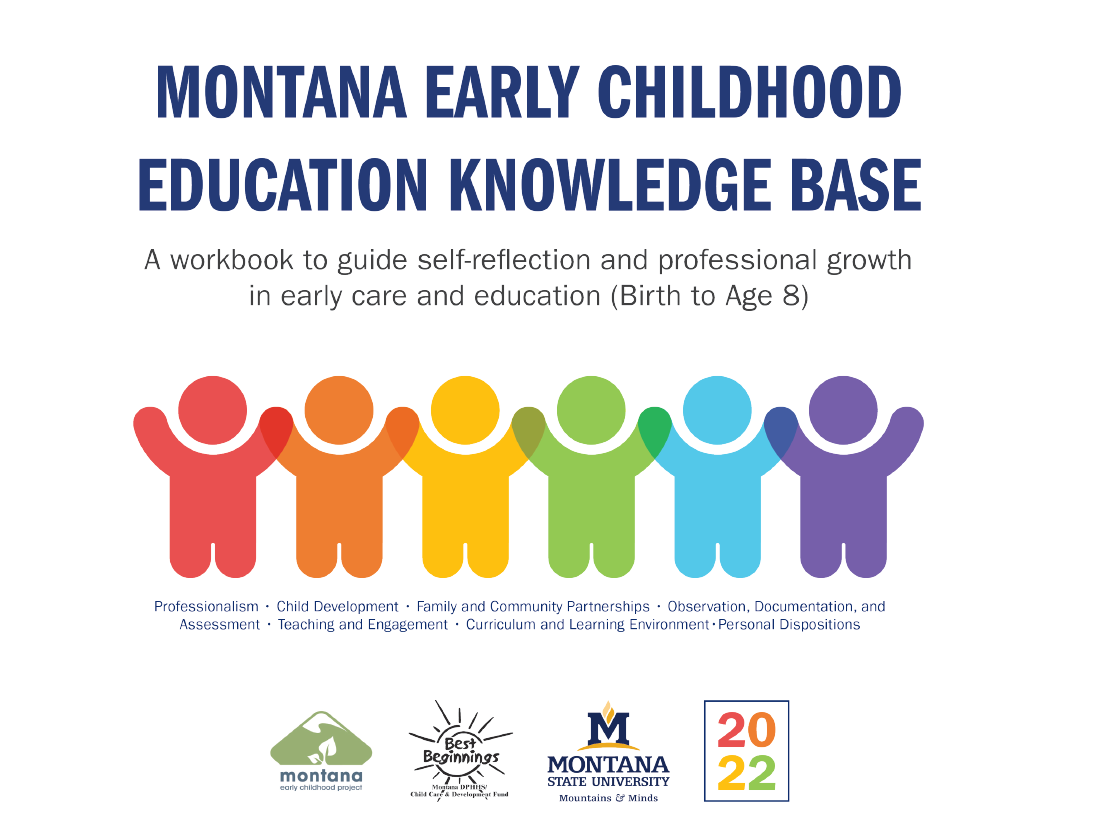
A copy of the Montana Early Childhood Education Knowledge Base is available for download.
Montana’s Early Learning Guidelines for Children 3 to 5 (2004) and Montana’s Early Learning Guidelines for Infants and Toddlers (2009) were incorporated into one document that represents a continuum of growth and development for children from birth to age 5. This integrated document is called the 2014 Montana Early Learning Standards (MELS). Copies of this document are available through the Early Childhood Services Bureau.
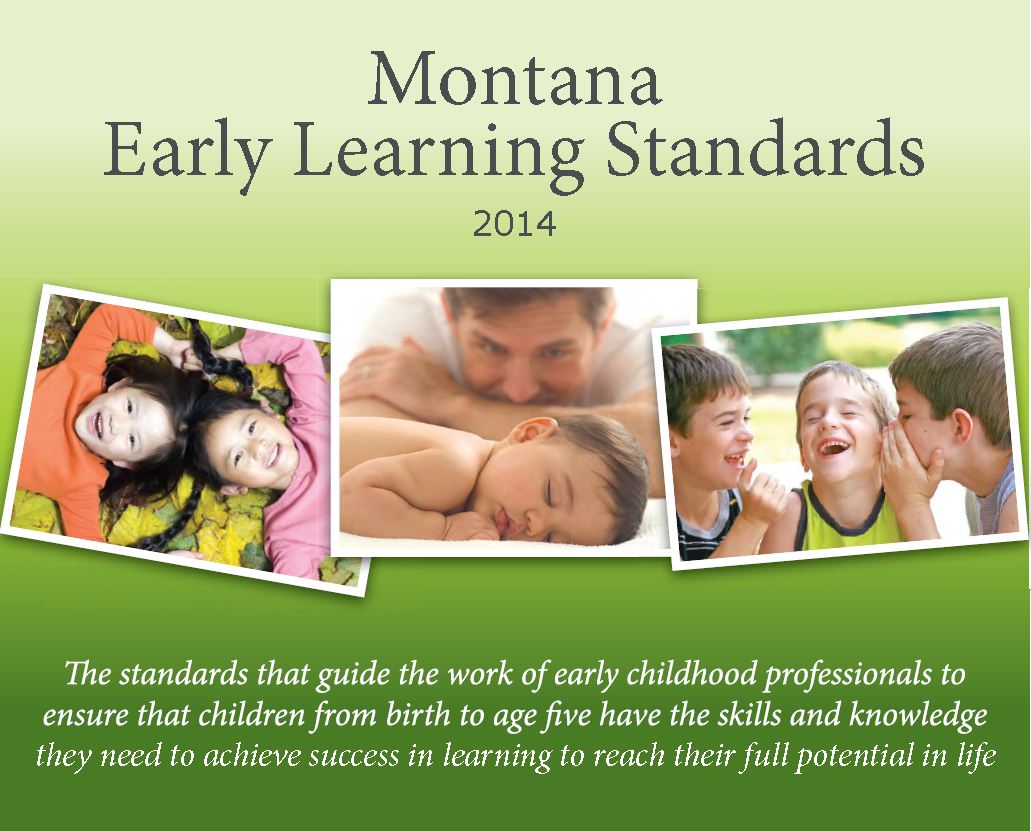
The YIKES Planning Guide includes the tools and information your child care program needs to
identify, plan for, and minimize the impact of emergency situations. Download the Your Inventory for Keeping Everyone Safe Guide (Fillable Online PDF) or Request a Printed Copy. Finally, if you are a child care provider and would like help implementing the guide use the YIKES Online Training.
See how state agencies collaborate to prioritize the safety of children in child care facilities using the State of Montana Child Care Disaster Plan.
Training Available: Supporting Children and Families Experiencing Homelessness
This series is designed to increase your knowledge around family homelessness to better support the children and families in your care. Learn how to identify families experiencing homelessness, conduct community outreach, and more.
Children are born ready to learn. The experiences that children have in the early years are the foundation for growth and development, and what they learn through these experiences are shaped by a child’s family, community and schools.
The building blocks for success in learning occurs before kindergarten. Families, communities, and schools all play a part in a child’s school readiness by supporting the development of skills and positive behaviors, as well as enhancing the environments in which they spend their time.
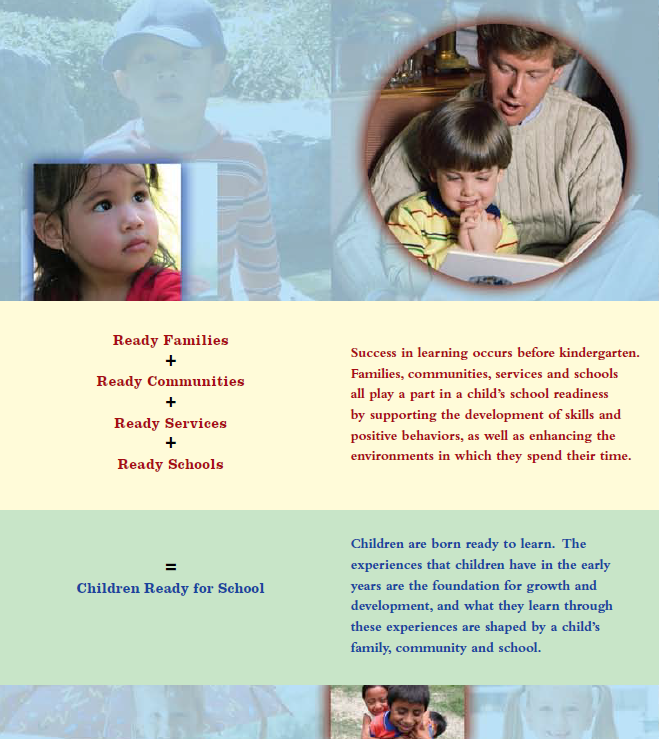
You can download and print a PDF version using the link below.
Tax Resources
- IRS - Small Business Resources - Child Care Programs
- Tax Tips for New Businesses
- W-9 Form
- W-9 Form - Spanish Version
Cost of Care Calculator
Use this resource to determine monthly and annual cost of care per child in your early care and education program.
Common conversions for payment rates
|
Conversion Needed |
Most Common Conversion Ratio |
|---|---|
|
Annual rate to monthly rate |
Divide by 12 (months per year) |
|
Annual rate to weekly rate |
Divide by 52 (weeks per year) |
|
Monthly rate to weekly rate |
Divide by 4.33 (weeks per month) |
|
Weekly rate to daily rate |
Divide by 5 (days per week) |
Programs and Services that Support Children and Families in Montana
The Child and Family Services Division (CFSD) is a part of the Montana Department of Public Health and Human Services.
Mission Statement
Keeping Children Safe and Families Strong
Statement of Purpose
To protect children who have been or are at substantial risk of abuse, neglect or abandonment. We strive to assure that all children have a family who will protect them from harm. We recognize the protective capacities of families and incorporate them in assessments, decision making and actions with the goal of improving safety, permanency and well being for children. We encourage our communities to strengthen their prevention efforts and to share responsibility for the safety of its children and families.
Core Values
- Children have the right to grow and develop in safe and permanent family environments.
- The safety of children is dependent on the actions/omissions of adults.
- When families and communities collaborate, the possibility for success is increased.
- The safety of children in our care is dependent upon multi-level stewardship of human and financial resources.
The Children’s Mental Health Bureau of the Developmental Services Division of the Montana Department of Public Health and Human Services administers state funded mental health services for children.
The mission of the Children's Mental Health Bureau is to support and strengthen Montana youth and families through Medicaid mental health services.
Their Vision is strong youth functioning in healthy families, living in supportive Montana communities.
Children's Special Health Services (CSHS) is charged by the Federal Maternal Child Health Bureau to: "Support development and implementation of comprehensive, culturally competent, coordinated systems of care for children and youth who have or are at risk for chronic physical, developmental, behavioral or emotional conditions and who also require health and related services of a type or amount beyond that required by children generally."
Children's Special Health Services focuses on building, measuring, and monitoring a complex system of care for Children and Youth Special Health Care Needs (CYSHCN) with the following goals:
Goal: Assure Family Participation & Satisfaction
Family members, including those representative of the culturally diverse communities served, must have a meaningful, enduring, and leading role in the development of systems at all levels.
Goal: Access to Medical Home
CYSHCN have an identified source of ongoing routine health care in their community.
Goal: Support Early and Continuous Screening
Infants and children with high-risk health conditions must be identified early.
Goal: Adequate Insurance
CSHCN families have a way to pay for services. The state CHIP program can help address this need, but resources and partnerships with other programs to address under insurance and provide "wrap-around services" are needed.
Goal: Access to Community-based Systems of Care
A system of care must be organized in such a way that needs can be identified, and services provided, and that there are mechanisms to pay for them.
Goal: Facilitate Transition to Adulthood
Youth with special health care need, as adults, must be able to expect good health care, employment with benefits, and independence.
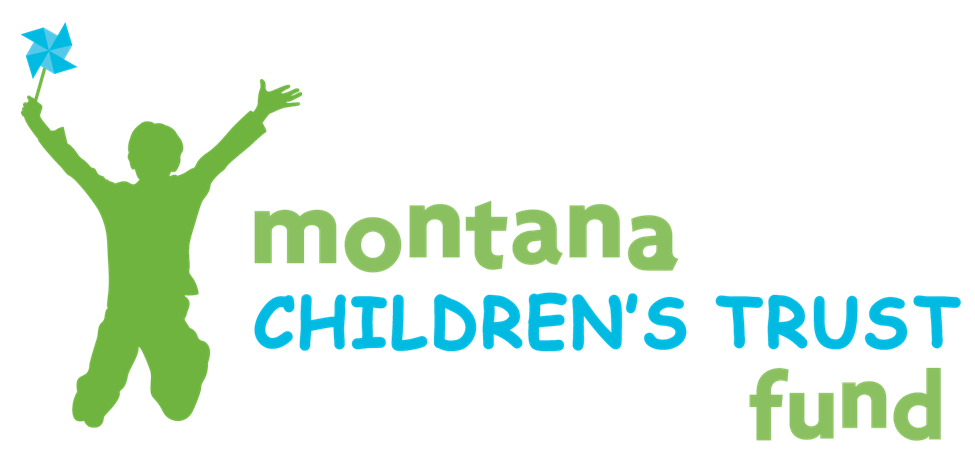
Nurturing Children, Supporting Communities,
Strengthening Families
We believe that Montana’s children are the state’s greatest assets. Today’s children are the leaders of tomorrow. We hold their future in our hands, and our future is in their hands.
Top priorities for Montana’s Children’s Trust Fund:
- Funding effective, primary prevention programs in local communities throughout Montana and enhancing communities' capacity to prevent child abuse and neglect by allocating CTF funds annually for primary and secondary child abuse and neglect prevention programs to community-based organizations;
- Supporting public education (such as conferences, workshops, and seminars) that increase participants' knowledge and understanding of child abuse and neglect prevention, and strengthening families and communities;
- Promoting the five protective factors; and
- Increasing positive parenting skills that ensure the health, safety and well-being of children.
Montana Medicaid Early and Periodic Screening, Diagnosis and Treatment
EPSDT is the Early and Periodic Screening, Diagnosis and Treatment portion of Medicaid's comprehensive healthcare coverage for children. It is available for all children in Medicaid from birth through age 20. The EPSDT goal is to assure individual children get the health care they need when they need it – the right care to the right child at the right time in the right setting.
Health Resources Division
The Health Resources Division (HRD) administers Medicaid primary care services, Healthy Montana Kids, Children's Health Insurance Plan, and Big Sky Rx. The purpose of the division is to improve and protect the health and safety of Montanans. The division reimburses private and public providers for a wide range of preventive, primary, and acute care services. Major Service providers include: physicians, public health departments, clinics, hospitals, dentists, pharmacies, durable medical equipment, and mental health providers.
Healthy Montana Families is a network of programs around the state that provide voluntary, family-centered services in the home to expectant families and families with new infants and young children.
What is home visiting?
Home visiting services support healthy pregnancy outcomes, child health and development, and strong parent-child relationships. Home visiting services build on parent and family strengths. Home visiting services are generally provided in the family’s home or wherever they are staying, and may also include opportunities for group connections and other community activities.
Professional, trained home visitors partner with parents and/or parents-to-be to meet the needs and goals of the family, connect the family to community resources, and promote the physical and emotional health of the child and family.
The home visiting models implemented in Montana as a part of the Healthy Montana Families are evidence-based, which means that research shows the models have positive outcomes for families. The models implemented in the state include:
Healthy Montana Kids (HMK), Children's Health Insurance Plan is just one of many Montana Healthcare Programs offering a free or low-cost health insurance plan which provides coverage to eligible Montana children up to age 19. Medical benefits are administered through the Blue Cross Blue Shield (BCBS) of Montana Provider Network, except for Federally Qualified Health Centers, Rural Health Clinics and Community Based Psychiatric Rehabilitation and Support Services. Treatments and services must be medically necessary and the member must be enrolled at the time the service is delivered. Covered services include medical, dental, eyeglasses, and other related services.
HMK Member Contact Numbers
Eligibility
Public Assistance Helpline
(888) 706-1535
Medical Benefits
Blue Cross Blue Shield of Montana
(855) 258-3489
Pharmacy, Dental and Eyeglass Benefits
Federally Qualified Health Centers, Rural Health Clinics and Community Based Psychiatric Rehabilitation and Support Services
Montana Healthcare Programs, Member Helpline
(800) 362-8312
IDEA - Building The Legacy of IDEA 2004
The Individuals with Disabilities Education Act (IDEA) is a law ensuring services to children with disabilities throughout the nation. IDEA governs how states and public agencies provide early intervention, special education and related services to more than 6.5 million eligible infants, toddlers, children and youth with disabilities.
Infants and toddlers with disabilities (birth-2) and their families receive early intervention services under IDEA Part C. Children and youth (ages 3-21) receive special education and related services under IDEA Part B.
The State of Montana, through the Department of Public Health and Human Services, offers two programs aimed at helping low-income individuals reduce their heating costs.
The Weatherization Program helps participants to improve the heating efficiency of their homes and thus reduce their energy consumption. The Low Income Energy Assistance Program (LIEAP) pays part of winter energy bills for eligible people. Most utilities offer LIEAP recipients discounts on their bills.
The Montana Immunization Program Mission is to prevent vaccine preventable disease among all residents throughout their life span by sharing information, managing data, providing education, giving guidance, and overseeing distribution of publicly-funded vaccines.
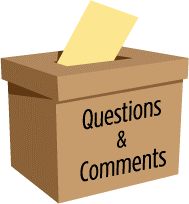 To submit a question or comment to the Immunization Program, please click on the suggestion box to access the online form.
To submit a question or comment to the Immunization Program, please click on the suggestion box to access the online form.
Montana Medicaid and HMK Plus are healthcare benefits for eligible low-income Montanans. Montana Medicaid and HMK Plus pays for services that are:
- Medically necessary,
- Provided by a Montana Medicaid/HMK Plus enrolled provider, and
- Medicaid/HMK Plus covered services.
The Supplemental Nutrition Assistance Program (SNAP) was established to aid in ending hunger and improve nutrition and health. SNAP benefits assist low-income households in purchasing the food they need for a nutritionally adequate diet and provides crucial support to needy households. SNAP enables eligible households to purchase food with the use of SNAP benefits issued each month in their Electronic Benefit Transfer (EBT) account. The amount of the allotment a household receives is determined by income, allowable expenses, and the household size.
Who Is Eligible To Participate In The Program?
- People who live together and buy food and prepare meals together are grouped as a “household” for SNAP. Husbands and wives, and children under age 22 living with their natural, adoptive or stepparents must be considered as one household.
- Household members that wish to be included must be U.S. citizens or legal aliens.
- Household members that wish to be included must furnish or apply for a social security number.
- Income and resource guidelines listed in this overview must be met.
- Able-bodied household members who are age 16 through 59 must register for work, and may be required to participate in a SNAP Employment and Training Program unless a specified exemption is met.
Montana’s Temporary Assistance for Needy Families (TANF) program is called TANF cash assistance, a welfare reform program that promotes the values of work, responsibility, and family. The MT Department of Public Health and Human Services is committed to the philosophy that public assistance is intended to provide temporary support to eligible individuals for the purpose of assisting them to reach economic self-support. The opportunity for self-support will be achieved through immediate employment, the vigorous pursuit of child support, and other alternatives to public assistance.
Temporary financial assistance may be provided to the following families and individuals:
- Minor Children;
- Specified relatives with whom the children are living;
- The minor children's blood-related/adoptive siblings with whom the children are living;
- Pregnant women in their last trimester who have no other eligible children; and
- Refugees with minor dependent children.
The receipt of TANF cash assistance is limited to 60 months in an adult's lifetime.
WIC provides good food and a whole lot more!
WIC is the Special Supplemental Nutrition Program for Women, Infants and Children. This public health program is designed to improve health outcomes and influence lifetime nutrition and health behaviors in a targeted, at-risk population. Nutrition education is the cornerstone of the WIC Program.
Wondering if you could be eligible for WIC?
Use this pre-screening tool to find out. This is not an application for WIC. You still need to visit your local WIC clinic to apply for WIC benefits. Please note, Montana WIC does not require proof of pregnancy.

